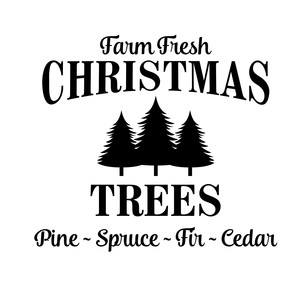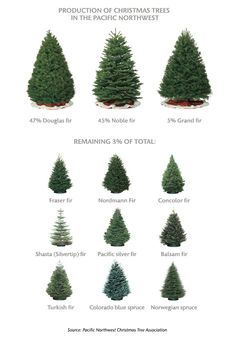With December here, it’s time to be thinking about a cut Christmas tree. Many cut your- own operations open the Friday after Thanksgiving such as Galehouse Tree Farm in Doylestown, Ohio.

Years ago, the Scotch Pine was king as far as a cut tree because it replaced the fast shedding Norway Spruce that was so common during the 1940’s and early 1950’s. As time moved into the late 60’s and 70’s, Colorado Spruce was all the rage because of its layered branches, some space into which to hang heavy ornaments and the fact that some had the blue needles that appealed to many buyers. Colorado Spruce will hold their needles reasonably well although not as tightly as Scotch Pine.
Around 1980, growers in North Carolina began growing and offering Fraser Fir with its dark green needles above and silver needles underneath. Although production costs and time are greater than the pine family, this tree with its higher cost caught on as the shape, softness of the needles and a long needle retention overcame any buyer’s aversion to the higher cost.
Fraser Fir while native to the Appalachian Mountains can be and is grown in Ohio where soils are well-drained such as on a slope.
Other trees that have been around for a long time include the long-needled white pine that must be trimmed to produce the classic “Christmas tree” shape. With its limber branches, white pines do not accept heavy ornaments as other trees do. Then there is the slow growing Concolor Fir with soft green to blue green needles and again excellent needle retention.
Concolor production problems include that they require an extremely fast draining soil and the fact that early spring frosts will “beat up” the trees rendering them unsaleable at least for the current year.

While there are many other conifers that are used for Christmas trees, they are not as popular such as spruces and some other firs. One other point about a cut tree desirably is the smell that is missing from an artificial tree. The concern that some buyers express is that they prefer not to have the tree cut down is misplaced as the trees are grown for that purpose with more coming behind them.
In order to make a cut tree last longer, unless freshly cut the same day as placing it in the stand, cut off about one inch of the bottom of the trunk so that the portion that is sealed off with resin is now discarded and the tree through capillary action will take up water. It’s important to never leave the tree stand run out of water.
Another “invention” of a cut tree is the Canaan Fir with three distinct sub species. This tree is quite similar to the Fraser Fir and is more adjustable to wetter Ohio soils. While the tree has the needle retention of Fraser Fir, it cannot be cut in early November but at Thanksgiving or later as it is prone to shedding when cut too early.
Mini lights or LED lights are preferred to the old-fashioned incandescent lights as the heat from incandescent lights can result in premature drying of the needles.
While the trees are growing, they are producing oxygen, preventing soil erosion and provide shelter for birds and other animals. Another benefit is that a home grown tree is American “made” and not imported from China. So there are many reasons to consider a real cut tree for Christmas.
Putting up the tree is just one part of your holiday decorating. Need help deciding which greens are the best for wreaths, check out this article for some great suggestions, The Perfect Greens for Holiday Decorating.